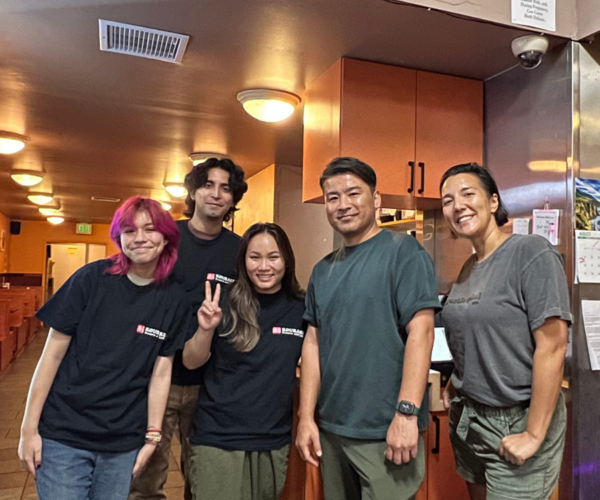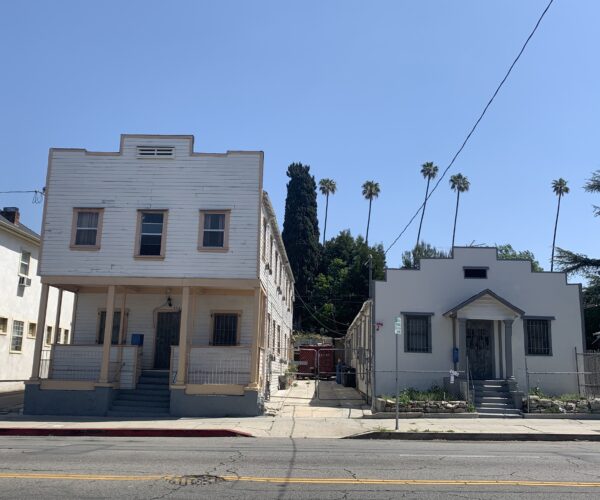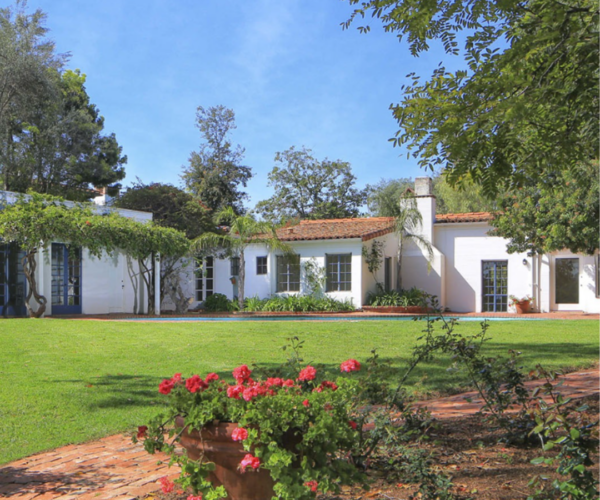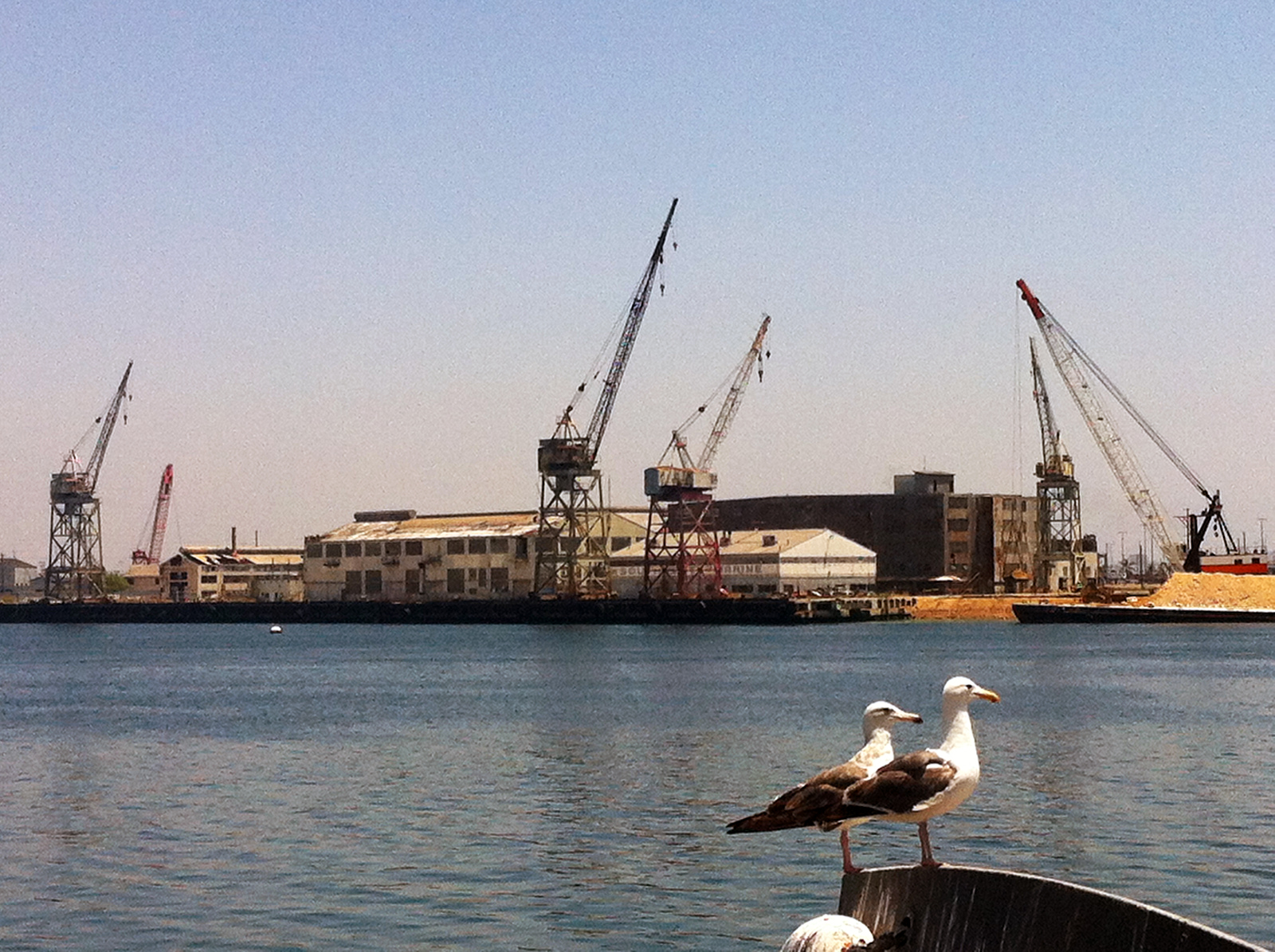
Place
Terminal Island
Active
Terminal Island played a vital role during WWI and WWII as a major shipbuilding center and was the place where America’s tuna canning industry came of age.
Place Details
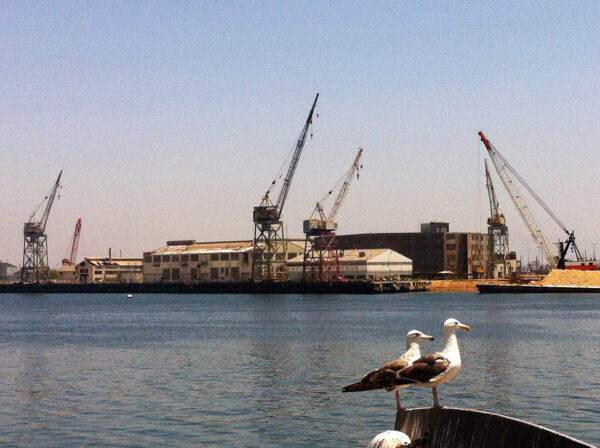
Photo by Adrian Scott Fine/L.A. Conservancy
Overview
For more than a decade, the Conservancy has advocated for the preservation and reuse of historic resources on Terminal Island as they tell an important story about Los Angeles and the nation’s maritime, commercial, and Japanese American history.
While the Port is a good steward of many historic resources, in recent years it has established an ongoing pattern and practice of needlessly demolishing historic buildings at Terminal Island without considering feasible alternatives.
On February 9, 2023, the L.A. Board of Harbor Commissioners voted in favor of demolishing the Star-Kist Cannery at Fish Harbor. The Port flipped its position recently on Star-Kist, now claiming that this world-famous tuna plant was not historic (despite previous studies saying it is). The plant is one of the last remaining facilities connected to Los Angeles’s once prolific canning industry. The Conservancy strongly opposes the demolition of this property as it has gained heightened significance since the Port has demolished nearly all of Fish Harbor’s historic resources in the last decade.
About This Place
About This Place
For most Angelenos, Terminal Island at the Port of Los Angeles is little known. Today an altered landscape of acres of cargo containers and towering cranes, Terminal Island reflects a surprisingly rich and varied history in several key areas:
- It launched a worldwide tuna canning industry that made tuna-fish a staple of American households and fostered L.A.’s growth as a major industrial hub—a tuna even appears on the official seal of Los Angeles County.
- It played a crucial role in both World Wars as a major shipbuilding center, setting world records for speedy delivery to support the war effort.
- It housed a vibrant Japanese American community of nearly 3,000 residents, who were the first in the nation to be forcibly removed from their homes and incarcerated during World War II.
Threatened historic resources make up only three percent of Terminal Island’s total acreage.
From Beach Resort to American Households
Terminal Island was known mainly in the late 19th century for its luxurious resort town, Brighton Beach, and as a rural beach haven for artists and writers. Fishing was not a large part of the island’s activities until 1893, when the first cannery opened.
Relocated from San Francisco after a slump in sardine fishing and renamed from its former Golden Gate Packing Company, California Fish Co. was located on the main channel of the island across from First Street in San Pedro. It specialized in sardines until the catch started to decline around the turn of the twentieth century, and they needed to find a new product.
In 1903, the company developed a new process to can cooked tuna, which was plentiful in local waters. Tuna had been available only on the fresh fish market. In a bid to introduce the fish into American households, CalFish capitalized on its relatively un-fishy flavor by steaming it white, packing it in salad oil, and marketing it as an affordable substitute for chicken.
Canned tuna was slow to catch on, but thanks to some clever promotion—including persuading grocers to give it away with the purchase of coffee—it took off and slowly but surely became one of the fastest growing industries in the Harbor.
The introduction of canned tuna coincided with the arrival of a small group of Japanese abalone fishermen from nearby White Point. Bringing expertise from their home region of Wakayama Prefecture, they soon proved to be extremely talented at commercial tuna fishing. Fishermen of Italian, Yugoslavian, Austrian, and Japanese descent made up most of the fishing fleet, and the Japanese were particularly noted for their skill. Learn more about how tuna went mainstream, here.
Wartime Shipbuilding at Terminal Island
When the United States entered World War I, it had an urgent need for a powerful merchant marine fleet. Under the purview of the federal government’s Emergency Fleet Corporation/Shipping Board, the Western Pipe and Steel Company broke ground on the Southwestern Shipbuilding yard on in March 1918. Only two months later, the company held government contracts for the delivery of 20 ships, with total expenditures of $30 million and a projected 5,000 employees.
What is now known as the Southwest Marine complex at Terminal Island played a key role in both World Wars, setting world records for quick production of ships for the war effort. It helped establish Los Angeles as a world port and was the site of progressive labor policies for the burgeoning African American population of Southern California. The site is now the last vestige of San Pedro’s once-mighty maritime history. For more information about wartime shipbuilding at Terminal Island, click here.
Japanese American History at Terminal Island
In the early 1940s, Terminal Island housed a vibrant community of nearly 3,000 Japanese and Japanese American residents. It had grown out of a small Japanese fishing village whose settlers helped launch a booming industry for canned tuna.
The island later starred in one of the darkest chapters of U.S. history, when its residents became the first Japanese Americans to be forcibly removed from their homes and detained at incarceration camps during World War II. Learn more about the rich Japanese American history at Terminal Island here.
While the Port of Los Angeles has not prioritized the preservation and reuse of Terminal Island’s historic buildings, it has been a good steward of its rich history in other ways.
Saving This Place
While the Conservancy has worked hard over the last ten years to advocate for preservation and reuse of historic buildings at Terminal Island, we have also sought to be pragmatic and prioritize specific issues. Despite gains made in 2013 with the adoption of the Port Master Plan, on February 9, 2023 the L.A. Board of Harbor Commissioners voted in favor of the proposed demolition of the Star-Kist Tuna Plant.
The familiar Star-Kist Company traces its origins to 1918 on Terminal Island when it was founded as the French Sardine Company by Yugoslavian immigrant Martin J. Bogdanovich. By 1952, the renamed Star-Kist Tuna Cannery’s new Main Plant held the distinction of being the single-largest cannery in the world. Star-Kist was the largest of several major tuna canneries, including Chicken of the Sea, which operated on Terminal Island for several decades and revolutionized seafood consumption through the introduction of canned tuna. While Star-Kist closed its facilities on Terminal Island in 1984, the buildings continue to represent a significant link to Los Angeles’ once-mighty tuna industry.
The Conservancy strongly opposes the demolition of this property as it has gained heightened significance since the Port has demolished nearly all of Fish Harbor’s historic resources in the last decade.
The Port Master Plan Update was considered a great step and a “win-win” for preservation. It was adopted on August 8, 2013 and came a long way from its initial version, which limited opportunities to revitalize Terminal Island’s historic resources through adaptive reuse and, in some cases, called for their demolition.
The following points summarized the Conservancy’s advocacy position:
- The Port Master Plan Update should provide a path forward for preservation of Terminal Island’s historic buildings. Preservation and reusing historic buildings should be made a priority, on par with other identified goals within the Plan.
- Designated land uses and policies should allow for the adaptive reuse of historic buildings, rather than their demise. Flexibility is needed within the Plan to ensure historic buildings can and will be adaptively reused while also still addressing fundamental goals for the Port. Placing competing land uses over Southwest Marine’s buildings severely limits their ability to be reused and adhere to the Plan.
- Terminal Island’s historic buildings can be successfully adapted for new uses. Every effort should be taken to look at creative reuse opportunities and public-private partnerships that can complement Port functions while preserving historic buildings.
- Historic, cultural and archaeological resources should be clearly identified within the Plan. The entire Port has yet to be surveyed and not all eligible historic buildings are indicated or even identified within the Plan.
- The remaining historic buildings are the last vestige of Terminal Island’s World War I and World War II shipbuilding, tuna canning industry, and Japanese-American built environment. As the last physical link to the extraordinary heritage of Terminal Island, the historic buildings should be appropriately maintained and preserved.
- Proposed roadway and rail realignments by the Port should be fully reevaluated, as they will directly call for the demolition of buildings at Southwest Marine. Realigning Seaside Avenue through Southwest Marine will further bisect the historic district and jeopardize its continued eligibility, as multiple buildings will be demolished.
In addition to adopting the Master Plan Update, the Port adopted a cultural resources policy (PDF) in May 2013. This policy was undertaken through the Port’s own initiative and was the first of its kind in the nation.
We thank the Port leadership, staff, and Board of Harbor Commissioners for taking our concerns seriously and collaborating with us to find a mutually beneficial solution. We want to acknowledge the office of Councilmember Joe Buscaino and their assistance with this effort.
We also thank the National Trust for Historic Preservation for being a partner with us in this effort and for listing Terminal Island on its 2012 list of America’s 11 Most Endangered Historic Places. This listing was instrumental in raising awareness of Terminal Island’s significance and engaging the Port in serious discussion about preservation options.
Related Links
News and other sources of information about Terminal Island’s rich history
News
- “What Happened on Terminal Island, Why It Matters and What Is at Risk.” Huffington Post. April 10, 2013.
- “A Fish Tale.” LMU Magazine. Winter 2013, Vol. 3, No. 2.
- “Meet Terminal Island, one of the most endangered places in the US.” KPCC. September 18, 2012.
- “Terminal Island on Endangered Sites List.” Rafu Shimpo. June 12, 2012.
- “Preservation group names Terminal Island endangered historic site.” Los Angeles Times. June 7, 2012.
Port of Los Angeles
- Steppin’ Back in Time Historical Tour: A Guide to Historical Sites in the Harbor Area. Port of Los Angeles.
- Virtual History Tour. Port of Los Angeles.
Japanese American Community
- “A Paradise Lost, Never Forgotten : For decades, Terminal Island was home to a close-knit community of Japanese Americans. Then came WWII. Today, former residents keep the bittersweet legacy of their village alive.” Los Angeles Times. January 5, 1994.
- California’s Japantowns and Terminal Island. Preserving California’s Japantowns, the first statewide project to document historic resources of pre-World War II Japantowns.
- Densho Digital Archive. Wealth of visual history interviews and other materials that broadly document the Japanese American experience.
- Discover Nikkei. Series of short Super 8 videos of fishing and Fish Harbor:
- “Off the coast of San Pedro, a Japanese community erased,” Curbed. Mar 30, 2018.
- “L.A. County supervisors to repeal 1942 resolution supporting internment of Japanese Americans.” Daily News. June 4, 2012.
- Terminal Island: Japanese American Businesses of 1940 (1925 map). Japantown Atlas Maps.
- Terminal Island Life History Project. Japanese American National Museum. 2001.
- “Terminal Islanders Celebrate 40th New Year’s Party.” The Rafu Shimpo. January 14, 2011.
- Terminal Island Japanese Memorial. SanPedro.com
- The Lost Village of Terminal Island. DVD Documentary. Our Stories.
- Tuna Street Japanese American Commercial Buildings. My Historic LA.
Canneries
- Architectural Survey and Evaluation of Pan-Pacific Fisheries. Los Angeles Harbor Department, Jones & Stokes, 2008.
- Between Catch & Can: Tuna Cannery Women of San Pedro, CA & the Los Angeles Harbor, 1930-1960. San Pedro History Project.
- Oral histories of Port of LA workers (video). Oral History Project, Port of Los Angeles, 2007.
- Oral history of cannery worker Helen Robello. The Virtual Oral / Aural History Archive. California State University Long Beach.
- Timeline of the Fishing Industry in Los Angeles Harbor
